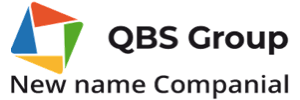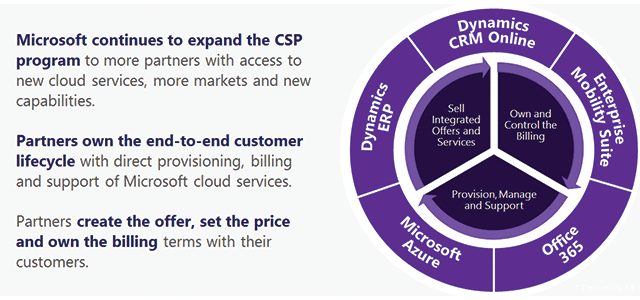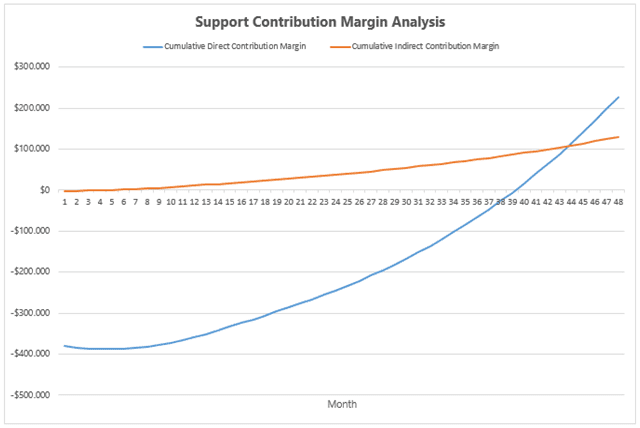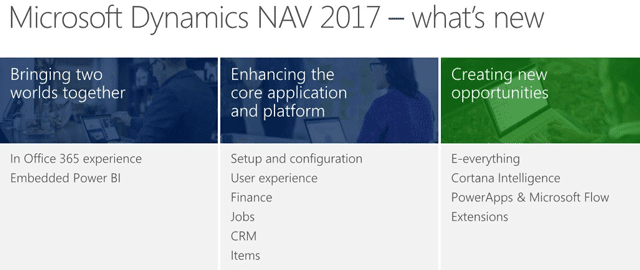“With AppSource, partners can get a much greater return on their IP”
Exclusive interview with Paul White.
Paul White is worldwide responsible for the Product Marketing of Dynamics CRM, NAV, GP, SL and Dynamics 365, the business applications with which Microsoft serves the SMB market. Guus Krabbenborg from QBS met Paul in Prague for an exclusive interview at DIRECTIONS EMEA 2016. This interview is part of QBS’s annual DIRECTIONS business report.
Main topics for this interview are of course the announcements around Dynamics NAV 2017 and Dynamics 365. And what this all means for the transformation of the Dynamics partner channel.

QUESTION: with all the recent announcements around Dynamics 365, what is your opinion on the status of the transformation process in Microsoft’s SMB channels?
ANSWER: “When we started this whole process some 4 years ago, I hoped that 30 percent of our partners would be able to transition to rapid cloud deployment, subscription pricing, product managed and packaged verticalization. But to be honest – I may have been over optimistic. In saying that I don’t mean to imply any criticism of our Partner Community. There’s no doubt that this shift is very significant and challenging. Microsoft has wrestled with similar challenges.
QUESTION: What’s the difference between the 30% who will make it and the 70% that may not?
ANSWER: I think it starts with understanding the nature of the shift that we are experiencing. This isn’t a Microsoft agenda – every other vendor has the same challenges. We’re in the middle of a fundamental change in the market. Buyer behavior is changing. Biz Apps are getting “commoditized”. That’s what creates the imperative for Partners to drive down their cost of sale, that’s what demands that Partners think lifetime value.
Those Partners who want to stay where they are have the opportunity to continue to serve the significant on premise market that will continue to exist for some time to come. Other Partners will see the launch of Dynamics 365 as a great moment to expand into the SaaS market which is growing much more quickly – and presents interesting new opportunities for ISV’s.”
QUESTION: You’ve been at the two DIRECTIONS events yourself, both in the US and in EMEA. What is your take on how well the NAV partner channel understands all the announcements around NAV 2017 and Dynamics 365?
ANSWER: “First of all: it is fair to say there is a lot going on. Keeping up is a challenge for both our partners and our own employees. We’ll be repeating the story at every opportunity and work hard at being consistent. The Directions webinars we do are one opportunity for Partners to stay current. Your publication is also really helpful.
Beyond that general observation – I think that during the two events our On premise AND cloud – Dynamics NAV AND Dynamics 365 story really resonated with people.”
QUESTION: In your belief, what is the biggest challenge for partners in this transformation process?
ANSWER: “The biggest challenge for the average Dynamics NAV partner today is in marketing. Buyer behavior has changed. When a potential prospect is beginning to think about buying – you need to help them find you (SEO, SEM, Lead Nurture). That’s job #1 – digital marketing.
Once they have found you online – you need to make sure that your web site and/or trial experience is sufficient to persuade them that you must be on their short list. Even before they every get in touch with you. That’s job #2 – product marketing.
Product marketing is about understanding the market and the business issues that your anonymous prospect will want solved. Product marketing is about working with Developers to meet that functional requirement in a way that is really compelling. Not in terms of weight of functionality – but quality/elegance of the experience. Product Marketing is then about demonstrating that, unattended, online.
Both Job #1 and Job #2 are problematic because, most NAV partners today are either Sales led or Development led. Successful Partners will be those that invest more in marketing competencies – either in their own teams and/or in co-operation with strong marketing agencies.”
QUESTION: How should partners differentiate their offerings over time?
ANSWER: “Today, the Intellectual Property (IP) at most partner companies has two arms and two legs. The problem is that employees can get up and go – and are really quite difficult to scale. We believe Partners need to distill the wisdom that their consultants have developed and package this up, productize it – create Extensions – and publish them as App’s in AppSource. Working that way we believe that partners can secure their IP and get a much greater return on it.
AppSource is the destination that Microsoft will promote to customer and partners. It’s a key part of our strategy to amplify the ISV opportunity around Dynamics 365.”
QUESTION: You have announced an offering to migrate existing NAV, GP and SL customers to Dynamics 365. Can you clarify that offering?
ANSWER: “The majority of our existing customers chose to buy perpetual licenses. They made an up-front investment that – as and when they are ready to move to the cloud – we want to help them “trade in”. This “trade in” takes the form of a 40 percent discount on the first 3 years of their subscription to the Business Edition Plan. We want Dynamics 365 to be the most compelling option for any existing NAV, GP and SL customer. Some part of that story is about the product/service we offer. Some part is about the range of additional solutions that our Partners make available in AppSource. Some part of that story is commercial.”
QUESTION: What is today’s position of Dynamics NAV managed services?
ANSWER: “The IP that NAV partners have developed is key to the future of this community. We’re working hard to protect it. That’s why we’ve worked to re-engineer the NAV product for the cloud in as non-disruptive a way as possible. Last year we announced the Managed Service for partners. Today about around 20 NAV partners have onboarded their solutions to this NAV/Azure platform. This year we’ve announced Dynamics 365. Over the next 12 months we will be working with these 20 partners and a number of other key ISV’s to migrate them to Dynamics 365.”
QUESTION: What happens to Dynamics NAV, GP and SL?
ANSWER: “All products go forward. Our commitment to cloud and Dynamics 365 changes nothing about our commitment to Dynamics NAV, GP and SL. We respect the investment that customers and partners have made in these products. We are committed to helping them make the most of their investment.”
QUESTION: What is your advice to partners regarding the CSP program?
ANSWER: “The most important thing for Partners to do is to get familiar with CSP. It is the licensing model with which we want to serve the SMB segment. Partners will need to make a strategic decision about whether they want to be a Direct CSP partner – contracting directly with Microsoft – or buy through an Indirect CSP partner – a distributor. There are different roles and responsibilities associated with each option.”
QUESTION: A lot seems to be changed in the pricing strategies of Dynamics 365 compared with the current Dynamics pricing policies. Can you explain?
ANSWER: “The new Dynamics 365 pricing is designed to be clean, simple, transparent and compelling. The Business edition of Dynamics 365 will only be available on a subscription basis, through CSP. Customers will be able to license each application (Finance, Sales or Marketing) on a per user per month basis. Alternatively, they will be able to license users with a “Plan”. The Plan enables users to mix and match functionality from across the Business edition – Financials, Sales and Marketing. This flexibility is designed to reflect the fact that most real world jobs now cross departmental boundaries. The Plan also provides users with full use rights to PowerApps and Flow.
The pricing models for Dynamics 365 are also designed to be really compelling – both for new customers and, as and when they are ready, existing customers.”
QUESTION: Finally – what is your advice to the Dynamics NAV channel, Paul?
ANSWER: “First of all: take the pre–view from Dynamics 365 and learn more about this new cloud solution. My number two advise: understand the CSP model. Since this will be the most important license model for Dynamics partners for the coming years. And last but not least, don’t forget to feel good about all the investments that Microsoft is making in Dynamics NAV!”
You can find much more Need-to-Know-Information in our Directions EMEA 2016 Business Report. Order now.






















